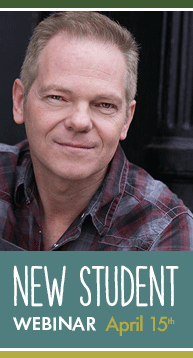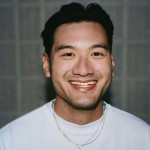from A Practical Handbook for the Actor
Physical Action – An Important Read for All Students of Acting
To act means to do, so you must always have something specific to do on stage or you will immediately stop acting. This is why physical action is so very important for the actor. Simply defined, an action is the physical pursuance of a specific goal. Physical action is the main building block of an actors technique because it is the one thing that you, the actor, can consistently do on stage. Choosing a good action is a valuable skill that can only be developed by long, hard practice. In this chapter you will find the requirements of a good action; use them as a checklist when figuring out an action for any scene.
An action must
- Be physically capable of being done.
- Be fun to do.
- Be specific.
- Have its test in the other person.
- Not be an errand.
- Not presuppose any physical or emotional state.
- Not be manipulative.
- Have a “cap”
- Be in line with the intentions of the playwright.
1) An action must be physically capable of being done. At any moment you should be able to begin doing it. For example, “pleading for help” is something you can begin to do immediately. Everyone knows how to do it. On the other hand, “pursuing the American dream” is not something you can pick up and do at a moment’s notice. To say something is physically capable of being done does not necessarily involve intense physical activity such as jumping up-and-down or assaulting someone. Pleading for help can be accomplished while sitting absolutely still in a chair. An action must be something that you, the actor, can actually accomplish onstage.
2) An action must be fun to do. As you will discover in scene analysis, any number of actions can be correct for a particular scene. Common sense dictates that you figure out the one you as an actor will want to do, since you are the one who will have to do it every night of the week. By fun we don’t necessarily mean something that makes you laugh, but something that is truly compelling to you. This includes things you might never actually do offstage, but that appeal to your sense of play. If you’ve ever really wanted to tell someone off, for instance, here’s your chance. Language is your main tool here. The more vital, active, and gutsy your language is, the more Life you will bring to the stage because your action will be that much more exciting to you. How much more fun is it to “talk a friend into spilling the beans” than to “get someone to give me information.” There will occasionally be times when a seemingly mundane action is perfectly correct for a scene. The point is to find the action you want to do. What gets you going? What gets you hot? Only you know. The way you speak to yourself is the way you will act. If you are clear, specific, and strong with yourself, then, chances are that that is how you will be onstage.
3) An action must be specific. Stanislavsky said, “Generality is the enemy of all art,” and nothing could be truer. If your action is in general, then everything you do on stage will be in general. The specificity of an action such as “extracting a crucial answer” will bring you to life much more than the vagueness of “finding out something.” Furthermore, a specific action will provide you with a clear, specific path to follow when playing the scene.
4) The test of the action must be in the other person. An action is the physical pursuance of a specific goal, and that specific goal must have to do with the other person. In other words, by looking at your partner, you should be able to tell how close you are to completing your action. This will also make you less self-conscious and allow you to concentrate on something infinitely more interesting than how well you are performing – that person across from you. If your action is “forcing an enemy to do my bidding,” at any moment you should be able to tell how close he is to doing your bidding, and only when he has done your bidding will you have completed the action.
5) An action cannot be an errand. An errand is an action that has no test in the other person. “Delivering a message” is not a good action because you do not have to look at your partner to see if you have accomplished it. Also, it can be accomplished in one line, leaving you with nothing to do for the rest of the scene. If you pick an action that keeps you working off the other person to achieve it, you will be brought to life throughout the scene. Too quickly and easily accomplished, an errand is boring both for you to perform and for the audience to watch. The action must be something it is possible to fail at; you cannot fail at an errand.
6) An action cannot presuppose any physical or emotional state, either in you or in your partner. You can’t artistically induce a physical or emotional state (e.g., hunger, anger, sorrow, drunkenness), because they are not within your control. Any action requiring you to put yourself into a certain state before or during a scene will force you to act a lie, the truth being that you are not actually in that state. If you try to work yourself up into a certain state for a scene, your attention will be entirely on the creation and maintenance of that state rather than on your action. As will be discussed later in detail, there is no such thing as a correct emotion for any scene. “Making a jerk know how mad I am” is a bad action because you cannot do it unless you are angry. A better action would be “putting a jerk in his place.”
The same holds true for your partner. “Calming down an excited friend” will not work because if the person in front of you is not excited, then you have nothing to play. “Building up a friend’s confidence” is a better choice because it does not presuppose your friends physical or emotional state; you can always build someone’s confidence higher than it already is.
7) An action cannot be manipulative. A manipulative action is one chosen to produce a desired effect on your partner. This type of action gives rise to the attitude that “I can do whatever I want to you, but nothing you do is going to affect me.” In other words, you make up your mind ahead of time how you are going to play the scene and allow nothing to sway you. An action such as “making someone cry” is manipulative. An action such as “forcing a friend to face facts” might very well make your partner cry, but the crying is more likely to be the honest response to your carrying out your action, rather than the result of your manipulation. A manipulative action can cause you to act in a predetermined way instead of dealing truthfully with what is happening in the other person.
8) The action must have a “cap”. The cap is that specific thing you are looking for that will mean that you have succeeded at your action. You must be able to tell whether or not you have finished doing your action by looking at the other person. For example, “to get a friend’s forgiveness” is an action with a cap. You know when your partner has forgiven you by his behavior toward you. On the other hand, an action such as “maintaining” someone’s interest” does not have a cap. Depending on the scene, you may never actually achieve your action, but you must always have a specific end to work toward onstage.
9) The action must be in line with the intentions of the playwright. This is extremely important, and can be better understood in conjunction with scene analysis. Once you have determined exactly what the playwright’s intentions are, the actions you choose must be true to those intentions. For example, in Arthur Miller’s Death of a Salesman, in the scene where Willy returns home after his harrowing trip, if the actress playing Linda chooses an action such as “putting someone in his place” for the scene, it is clearly out of whack with the intentions of the playwright. Something more in line with the scene would be “assuring a loved one of my support.”
Within each action is an infinite number of tools, or ways to go about executing that action. For instance, if your action is “to get a straight answer,” at various points in the scene you might demand, cajole, reason with, intimidate or threaten the other person to get the answer. After you have analyzed a scene try listing some of the tools you can use to go about getting what you want. The right tool is, as you will learn later on, mainly dictated by what the other person in the scene is doing.
In addition to Audition by Michael Shurtleff, one of our favorite books for actors is A Practical Handbook For The Actor by Melissa Bruder, Lee Michael Cohn, Madeleine Olnek, Nathaniel Pollack, Robert Previto & Scott Zigler.

































